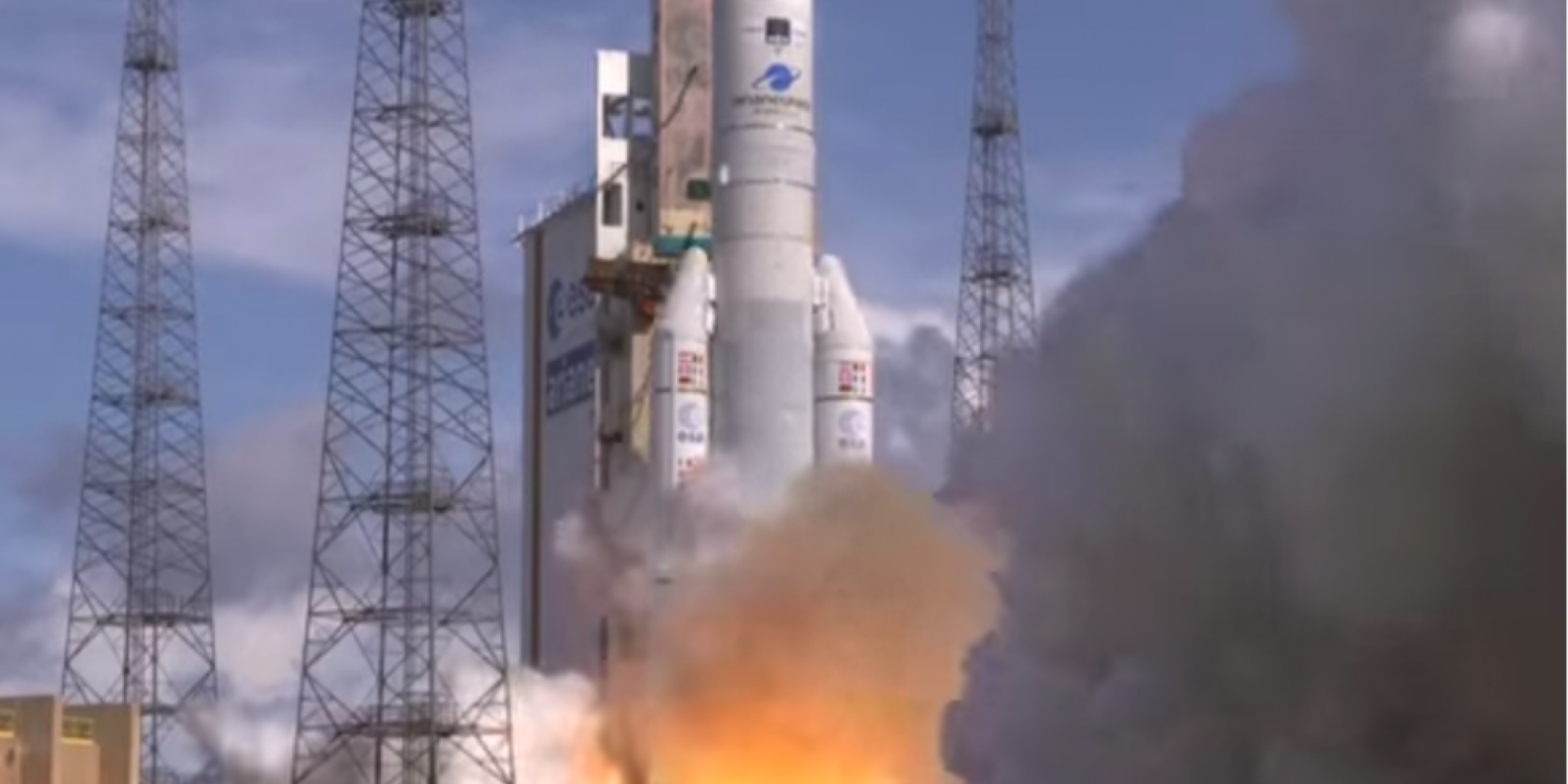Tuesday 6 August, Ariane 5 completed a flawless launch from Europe’s spaceport at the Guiana Space Centre (CSG), placing into geostationary transfer orbit two telecommunications satellites: Intelsat 39 for operator Intelsat, and EDRS-C for ESA and Airbus. The launch was Ariane 5’s 105th flight, its third in 2019 and the seventh of the year from the CSG.
With a launch mass of 6,600 kilograms, Intelsat 39 is a telecommunications satellite built in Palo Alto, California by Maxar Technologies, a leading supplier of cutting-edge satellite systems. The 61st Intelsat satellite to be orbited by an Ariane launcher, Intelsat 39 is equipped with wide and high-powered steerable spot beams to cater for high-speed broadband operators, video providers and government customers across Africa, Asia, Europe, the Middle East and the Indian Ocean region. The flexibility of the payload’s narrow, steerable beams will enable customers to respond rapidly and efficiently to changes in geographic and/or application requirements. The satellite’s C- and Ku-band capabilities will also add scale to Intelsat’s Flex managed services, enhancing mobile connectivity for aeronautical, maritime and government users operating in these regions. The satellite has an expected lifetime of more than 15 years.
With a launch mass of 3,186 kilograms, EDRS-C is a telecommunications satellite built by OHB System AG. It will be the second communications node in the SpaceDataHighway, space’s first fibre-optic network, employing cutting-edge laser technology to provide speeds of up to 1.8 Gbit/s via its geostationary satellites and ground stations. It will help to improve environmental and security monitoring, disaster response and crisis management. From its position in geostationary orbit, it will relay data collected by observation satellites to Earth in near-real time, a process that would normally take several hours. This will triple the quantity of image and video data transmitted by observation satellites and make it possible to retask them at any time within minutes. The satellite has an expected lifetime of 15 years.
On the occasion of the launch, https://fscience-old.originis.fr/wp-content/uploads/2023/06/GLOC_Oslo_Norway_S2_27juillet2022_web-2-1.jpg President Jean-Yves Le Gall said: “On its 105th flight completed with flying colours, Ariane 5 has once again confirmed its quality and reliability. I congratulate and thank all of the teams to whom we owe this success for their professionalism and expertise, at ESA, Arianespace, across the European space industry, at Intelsat and Airbus, and of course at https://fscience-old.originis.fr/wp-content/uploads/2023/06/GLOC_Oslo_Norway_S2_27juillet2022_web-2-1.jpg’s Launch Vehicles Directorate and the Guiana Space Centre.â€








